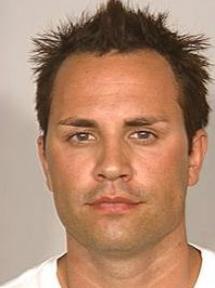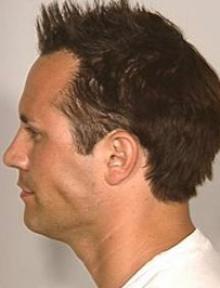 Maybe I’m the wrong ex-patient to be telling you this: Experimental surgery erased stage III colon cancer from my shell-shocked body six years ago. But even I’ve got to admit that all is not well in America’s operating rooms. Please don’t get me wrong. I’d go back under the scalpel in a minute if I had a gastro-tumor recurrence (like White House press officer Tony Snow did) or some totally unrelated, unforeseen orthopedic emergency (a knee injury, for instance). But at least 12,000 Americans die each year from unnecessary surgery, according to a Journal of the American Medical Association (JAMA) report. And tens of thousands more suffer complications.
Maybe I’m the wrong ex-patient to be telling you this: Experimental surgery erased stage III colon cancer from my shell-shocked body six years ago. But even I’ve got to admit that all is not well in America’s operating rooms. Please don’t get me wrong. I’d go back under the scalpel in a minute if I had a gastro-tumor recurrence (like White House press officer Tony Snow did) or some totally unrelated, unforeseen orthopedic emergency (a knee injury, for instance). But at least 12,000 Americans die each year from unnecessary surgery, according to a Journal of the American Medical Association (JAMA) report. And tens of thousands more suffer complications.
The fact is, no matter how talented the surgeon, the body doesn’t much care about the doc’s credentials. Surgery is a trauma, and the body responds as such—with major blood loss and swelling, and all manner of nerve and pain signals that can stick around sometimes for months.
Those are but a few reasons to try to minimize elective surgery. And I found even more after talking with more than 25 experts involved in various aspects of surgery and surgical care, and after reviewing a half-dozen governmental and medical think tank reports on surgery in the United States. Here, what you need to know about five surgeries that are overused, and newer, sometimes less-invasive procedures and solutions that may be worth a look.
 Surgery to Avoid No. 1: Hysterectomy
Surgery to Avoid No. 1: Hysterectomy
There’s long been a concern, at least among many women, about the high rates of hysterectomy (a procedure to remove the uterus) in the United States. American women undergo twice as many hysterectomies per capita as British women and four times as many as Swedish women.
The surgery—either traditional open (large incision) or laparoscopic (small incision) — is commonly used to treat persistent vaginal bleeding or to remove benign fibroids and painful endometriosis tissue. And if both the uterus and ovaries are removed, it takes away your sources of estrogen and testosterone. Without these hormones, your risk of heart disease and osteoporosis rises markedly. There are also potential side effects, from newfound pelvic problems to lower sexual desire and reduced pleasure. Hysterectomies got more negative press after a landmark 2005 University of California, Los Angeles (UCLA), study revealed that, unless a woman is at very high risk of ovarian cancer, removing her ovaries during hysterectomy actually raised her health risks.
So why are doctors still performing the double-whammy surgery? “Our profession is entrenched in terms of doing hysterectomies,” says Ernst Bartsich, MD, a gynecological surgeon at Weill-Cornell Medical Center in New York. “I’m not proud of that. It may be an acceptable procedure, but it isn’t necessary in so many cases.” In fact, he adds, of the 617,000 hysterectomies performed annually, “from 76 to 85 percent” may be unnecessary.
Although hysterectomy should be considered for uterine cancer, some 90 percent of procedures in the United States today are performed for reasons other than treating cancer, according to William H. Parker, MD, clinical professor of gynecology at UCLA and author of the ’05 study. The bottom line, he says: If a hysterectomy is recommended, get a second opinion and consider the alternatives.
What to do instead
Go knife-free. Endometrial ablation, a nonsurgical procedure that targets the uterine lining, is another fix for persistent vaginal bleeding.
Focus on fibroids. Fibroids are a problem for 20 to 25 percent of women, but there are several specific routes to relief that aren’t nearly as drastic as hysterectomy. For instance, myomectomy, which removes just the fibroids and not the uterus, is becoming increasingly popular. And there are other less-invasive treatments out there, too.
In France in the early 1990s, a doctor who was prepping women for fibroid surgery—by blocking, or embolizing, the arteries that supplied blood to the fibroids in the uterus—noticed a number of the benign tumors either soon shrank or disappeared, and, voila, Jacques Ravina, MD, had discovered uterine fibroid embolization (UFE). Since then, interventional radiologists in the United States have expanded their use of UFE (typically a one- to three-hour procedure), using injectable pellets that shrink and “starve” fibroids into submission. Based on research from David Siegel, MD, chief of vascular and interventional radiology at Long Island Jewish Medical Center, New Hyde Park, New York, some 15,000 to 18,000 UFEs are performed here each year, and up to 80 percent of women with fibroids are candidates for it.
Another new fibroid treatment is high-intensity focused ultrasound, or HIFU. This even less invasive, more forgiving new procedure treats and shrinks fibroids. It’s what’s called a no-scalpel surgery that combines MRI (an imaging machine) mapping followed by powerful sound-wave “shaving” of tumor tissue.
 Surgery to Avoid No. 2: Episiotomy
Surgery to Avoid No. 2: Episiotomy
It can sound so simple and efficient when an OB-GYN lays out all the reasons why she performs episiotomy before delivery. After all, it’s logical that cutting or extending the vaginal opening along the perineum (between the vagina and anus) would reduce the risk of pelvic-tissue tears and ease childbirth. But studies show that severing muscles in and around the lower vaginal wall (it’s more than just skin) causes as many or more problems than it prevents. Pain, irritation, muscle tears, and incontinence are all common aftereffects of episiotomy.
Last year the American College of Obstetricians and Gynecologists (ACOG) released new guidelines, which said that episiotomy should no longer be performed routinely—and the numbers have dropped. Many doctors now reserve episiotomy for cases when the baby is in distress. But the rates (about 25 percent in the United States) are still much too high, experts say, and some worry that it’s because women aren’t aware that they can decline the surgery.
“We asked women who’d delivered vaginally with episiotomy in 2005 whether they had a choice,” says Eugene Declercq, PhD, main author of the leading national survey of childbirth in America, “Listening to Mothers II,” and professor of maternal and child health at the Boston University School of Public Health. “We found that only 18 percent said they had a choice, while 73 percent said they didn’t.” In other words, about three of four women in childbirth were not asked about the surgery they would soon face in an urgent situation. “Women often were told, ‘I can get the baby out quicker,’” Declercq says, as opposed to doctors actually asking them, ‘Would you like an episiotomy?’”
What to do instead
Communicate. The time to prevent an unnecessary episiotomy is well before labor, experts agree. When choosing an OB-GYN practice, ask for its rate of episiotomy. And when you get pregnant, have your preference to avoid the surgery written on your chart.
Get ready with Kegels. Working with a nurse or mid-wife may reduce the chance of such surgery, experts say; she can teach Kegel exercises for stronger vaginal muscles, or perform perineal and pelvic-floor massage before and during labor.
Surgery to Avoid No. 3: Angioplasty
Every year in the United States, surgeons perform 1.2 million angioplasties, during which a cardiologist uses tiny balloons and implanted wire cages (stents) to unclog arteries. This Roto-Rooter-type approach is less invasive and has a shorter recovery period than bypass, which is open-heart surgery. The problem: A groundbreaking study of more than 2,000 heart patients, just released this year at a cardiology conference and in The New England Journal of Medicine, indicated that a completely nonsurgical method—heart medication—was just as beneficial as angioplasty and stents in keeping arteries open in many patients. The bottom line: Angioplasty did not appear to prevent heart attacks or save lives among nonemergency heart subjects in the study.
What to do instead
Take the right meds. If the study is right, medications may be as strong as steel. “If you have chest pain and are stable, you can take medicines that do the job of angioplasty,” says William Boden, MD, of the University of Buffalo School of Medicine, Buffalo, New York, and an author of the study. Medicines used in the study included aspirin, and blood pressure and cholesterol drugs—and they were taken along with exercise and diet changes.
“If those don’t work, then you can have angioplasty,” Boden says. “Now we can unequivocally say that.”
Of course, what’s right for you depends on the severity of your atherosclerosis risks (blood pressure, cholesterol, triglycerides) along with any heart-related pain. The onus is also on the patient to treat a doc’s lifestyle recommendations—diet and exercise guidelines—just as seriously as if they were prescription medicines.
 Surgery to Avoid No. 4: Heartburn Surgery
Surgery to Avoid No. 4: Heartburn Surgery
A whopping 60 million Americans experience heartburn at least once a month; some 16 million deal with it daily. So it’s no wonder that after suffering nasty symptoms (intense stomach-acid backup or near-instant burning in the throat and chest after just a few bites), patients badly want to believe surgery can provide a quick fix. And, for some, it does.
A procedure called nissen fundoplication can help control acid reflux and its painful symptoms by restoring the open-and-close valve function of the esophagus. But Jose Remes-Troche, MD, of the Institute of Science, Medicine, and Nutrition in Mexico, reported in The American Journal of Surgery that symptoms don’t always go away after the popular procedure, which involves wrapping a part of the stomach around the weak part of the esophagus.
“That may be because surgery doesn’t directly affect healing capacity or dietary or lifestyle choices, which in turn can lead to recurrence in a hurry,” he says.
The surgery can come undone, and side effects may include bloating and trouble swallowing. Remes-Troche believes it’s best for very serious cases of long-standing gastroesophageal reflux disease (GERD) or for those at risk of Barrett’s esophagus, a disease of the upper gastrointestinal tract that follows years of heartburn affliction and can be a precursor to esophageal cancer.
What to do instead
Make lifestyle changes. A combination of diet, exercise, and acid-reducing medication may help sufferers beat the burn without going under the knife. But it’s a treatment that requires perseverance.
“It took me four years of appointments, diets, drugs, sleeping on slant beds—and even yoga—to keep my heartburn manageable,” says Debbie Bunten, 44, a Silicon Valley business-development manager for a software firm, who was eager to avoid surgery. “But I did it, and am glad I did.”
Pose for a picture. Another technological development can make a heartburn diagnosis easier to swallow—a tiny camera pill that beams pictures of your esophagus (14 shots per second) through your neck to a receiver or computer in the doctor’s office; it passes harmlessly out of your system four to six hours later. The $450 Pillcam (a similar camera capsule from Olympus is awaiting Food and Drug Administration approval) can be used instead of standard endoscopy to screen chronic-heartburn sufferers for various esophageal complaints, including GERD, which can develop into the potentially precancerous Barrett’s esophagus. Unlike an endoscopy, in which you’re sedated and a lighted tube is snaked down your throat, a capsule camera leaves you wide awake and is finished within 20 minutes, says Pillcam guru David Fleischer, MD, a staff physician in gastroenterology and hepatology, and professor of medicine at Mayo Clinic College of Medicine. If anesthesia makes you sick, the capsule camera may be for you.
 Surgery to Avoid No. 5: Lower-Back Surgery
Surgery to Avoid No. 5: Lower-Back Surgery
Since the 1980s, operations for lower-back pain and sciatica have increased roughly 50 percent, from approximately 200,000 to more than 300,000 surgeries annually in the United States. That rise is largely due to minimally invasive advances that include endoscopic keyhole tools used in tandem with magnified video output.
To its credit, surgery (endoscopic or the traditional lumbar-disc repair) does relieve lower-back pain in 85 to 90 percent of cases, docs say. “Yet the relief is sometimes temporary,” says Christopher Centeno, MD, director of the brand new Centeno-Schultz Pain Clinic near Denver. And that adds up to tens of thousands of frustrated patients who find the promise of surgery was overwrought or short-lived.
What to do instead
Try painkillers and exercise. Despite the relentless nature of lower-back pain, the most common cause is a relatively minor problem—muscle strain—not disc irritation, disc rupture, or even a bone problem, experts say. Despite its severity, this type of spine pain most often subsides within a month or two. That’s why surgery, or any other invasive test or treatment beyond light exercise or painkillers, is rarely justified within the first month of a complaint. Even pain caused by a bulging or herniated disc “resolves on its own within a year in some 60 percent of cases,” orthopedists claim.
“Seventy to eighty percent of the time we can get to a concrete diagnosis, find a way to manage pain, and get patients off the drugs without surgery,” Centeno says. “Or, more appropriately, never start the drugs.”
“We used to prescribe 30 days bed rest for patients with herniated discs, but that was 15 to 20 years ago,” says Venu Akuthota, MD, medical director of the Spine Center at University of Colorado Hospital and associate professor of medicine at the University of Colorado School of Medicine. “Actually, movement is very helpful for treating back conditions. Nowadays, we prescribe moderate, low-impact exercise, like walking, or working out on an elliptical trainer or treadmill.”
Learn about stem cells. I’ve seen the future of back surgery firtshand. And it looked to me, from behind my surgical mask, as if a woman’s bare behind was doing much of the work. Up close, huddled inside the Centeno-Schultz Pain Center, I joined a team of MDs, a PhD, and two nurses to witness orthopedic history in vivo: an adult stem cell (ASC) transplant to help bones and joints grow anew.
In the midst of the huddle, Centeno, the back- and neck-pain specialist, is plunging a needle that looks big enough to use on a horse deep into the hip bone of a 54-year-old weekend athlete and skier who’s been forced to the sidelines by injury and long-term lower-back pain. The patient is tired of pain pills but wary of major surgery. Instead she’s undergoing one of the first ASC orthopedic transplants in the nation.
The harvested stem cells will be used to grow millions of new ones that will be implanted in her back to spur and regenerate more youthful, healthy joint tissue—if all goes as planned in this part of an ongoing study approved by a medical research institutional review board, that is. So far, at least, it has. Early MRI pictures of related procedures have shown impressive growth of regenerative tissue. And there’s even better news: By using the patient’s own stem cells, the surgical team avoids the ethical debate over using embryonic tissue for research purposes.
By Curt Pesmen
http://living.health.com


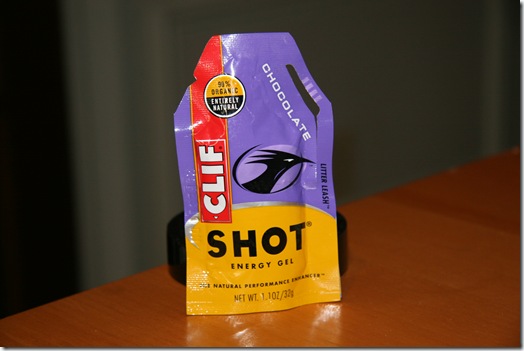





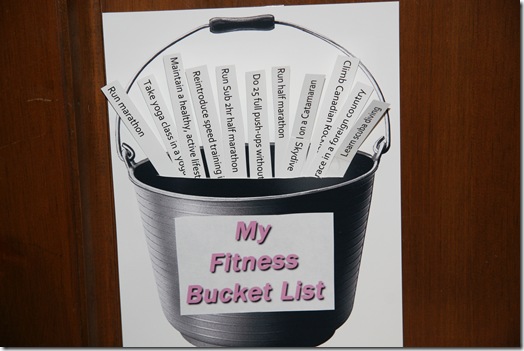
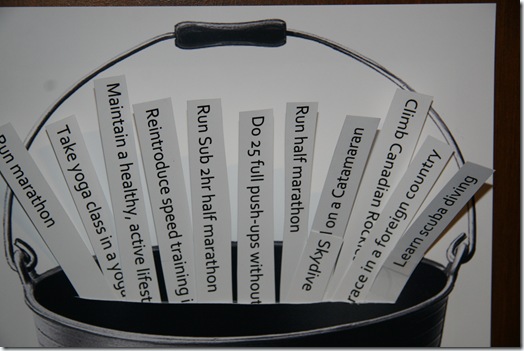
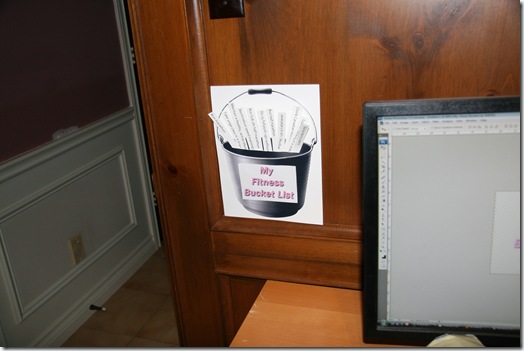

















 Maybe I’m the wrong ex-patient to be telling you this: Experimental surgery erased stage III colon cancer from my shell-shocked body six years ago. But even I’ve got to admit that all is not well in America’s operating rooms. Please don’t get me wrong. I’d go back under the scalpel in a minute if I had a gastro-tumor recurrence (like White House press officer Tony Snow did) or some totally unrelated, unforeseen orthopedic emergency (a knee injury, for instance). But at least 12,000 Americans die each year from unnecessary surgery, according to a Journal of the American Medical Association (JAMA) report. And tens of thousands more suffer complications.
Maybe I’m the wrong ex-patient to be telling you this: Experimental surgery erased stage III colon cancer from my shell-shocked body six years ago. But even I’ve got to admit that all is not well in America’s operating rooms. Please don’t get me wrong. I’d go back under the scalpel in a minute if I had a gastro-tumor recurrence (like White House press officer Tony Snow did) or some totally unrelated, unforeseen orthopedic emergency (a knee injury, for instance). But at least 12,000 Americans die each year from unnecessary surgery, according to a Journal of the American Medical Association (JAMA) report. And tens of thousands more suffer complications. Surgery to Avoid No. 1: Hysterectomy
Surgery to Avoid No. 1: Hysterectomy Surgery to Avoid No. 2: Episiotomy
Surgery to Avoid No. 2: Episiotomy Surgery to Avoid No. 4: Heartburn Surgery
Surgery to Avoid No. 4: Heartburn Surgery Surgery to Avoid No. 5: Lower-Back Surgery
Surgery to Avoid No. 5: Lower-Back Surgery




